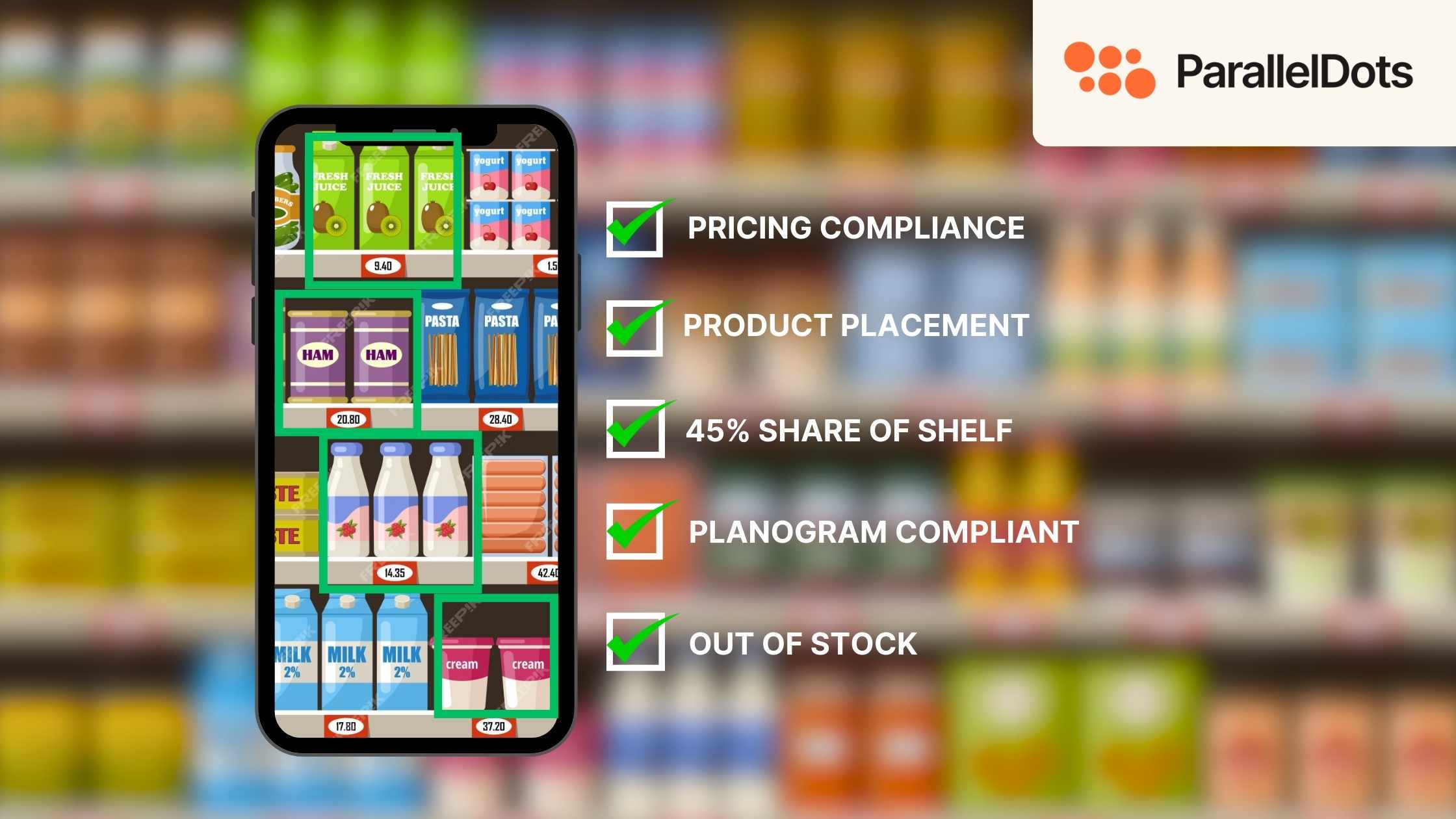As the battle to win at the shelf intensifies, brands are starting to understand the importance of perfect retail execution. Perfect store execution has always been the key ingredient in achieving sales growth and consumer satisfaction.
It is no new fact that people buy what they see. Which is why CPG companies are spending heavily to improve their in-store brand visibility.
How consumers behave between aisles plays a major role in deciding upon important business and sales strategies for CPG brands. With ever-going market research, retailers have understood that consumer behavior is directly proportional to product availability and brand visibility upon the shelf. This makes monitoring shelf presence for brands crucial.
In a previous blog, we discussed the features of a perfect store and how it can be achieved with the help of image recognition technology. In this blog, we discuss four strategies that the biggest CPGs are implementing for attaining perfect retail execution.
1. For a Successful Retail Execution, Give Merchandising Enough Time

As we mentioned earlier, more often than not, shoppers buy what is easily visible to their eyes. Their buying decisions are a combination of what they plan to buy and product availability on the shelf. As a result, the amount of time retailers spend on their merchandising directly influences their sales rate. Presentation matters a lot, especially when it comes to the system of modern trade.
In a survey, it was found that as much as 44% of retailers use manual methods for in-store audits and measuring compliance
Although several modern techniques have been introduced in the retail market for conducting market research and store auditing, most retailers are still stuck with traditional approaches. Manual auditing methods are error-prone and easily subjected to human bias. They are inaccurate and expensive to boot.
There is tremendous scope for companies to save cost and time with advanced solutions like image recognition and object detection. Tools enabled with image recognition technology, like ShelfWatch, can free up 60 percent of sales reps’ auditing time and allow them to focus on selling activities.
2. Know That Every SKU is Important; Leave None Behind

With thousands of products distributed across an ever-increasing store universe, maintaining brand health takes a lot of time and effort. Gathering knowledge about shelf presence or ensuring products are in the right location on a massive scale is something that cannot be achieved through traditional methods.
But automated image recognition solutions like ShelfWatch can accurately identify and analyze individual Stock Keeping Unit (SKU) across stores. In a study, it was found that a large FMCG manufacturer saw up to 20% variance when they used image recognition instead of manual methods while measuring share of shelf. This is an essential increase when it comes to strategizing for perfect retail execution.
3. Reward Sales Reps Based on Retail Execution Performance

The lack of reliable store data means there’s no proper way for companies to track and identify good execution performance and reward the reps accordingly. The existing data collection methods tend to be inaccurate and are vulnerable to bias.
Image recognition solutions provide instant insights that allow merchandising managers to track the reps' execution performance within minutes of capturing images.
ShelfWatch's mobile app works on real-time data quality-check by immediately notifying the sales reps in cases of blurry images.
It also supports automated geo-tracking to find the nearby store previously entered by the field staff. This curtails the manual addition of the store each time sales reps go to gather data.
Also, as soon as the reps upload the images, the merchandising managers get instant insights regarding retail execution. They also get alerts on product availability and out of stock (OOS ) situations in time to take instant corrective measures.
4. Use Insights to Boost Shelf Value

With instant, real-time monitoring techniques, brands can gain a fresh perspective on what's influencing their customers' buying decisions between the aisles. Required measures can also be implemented in case of OOS, product placement and assortment compliance.
Merchandising managers can also keep track of promotional displays and gather shelf-wise data to calculate individual shelf value. This would help them categorize shelves from lowest to highest priority with respect to initiating corrective measures. Ultimately, this would help brands achieve desired compliance and retail execution.
Instilling the mindset of a perfect store is imperative. To successfully implement that perfect store , using image recognition tools such as ShelfWatch is one of the best strategies that CPG manufacturers can use to win the war of achieving perfect retail execution.
Liked the blog? Do let us know your views in the comment section below.
Want to see how your own brand is performing on the shelves? Click here to schedule a free demo.





.jpg)
.jpg)
